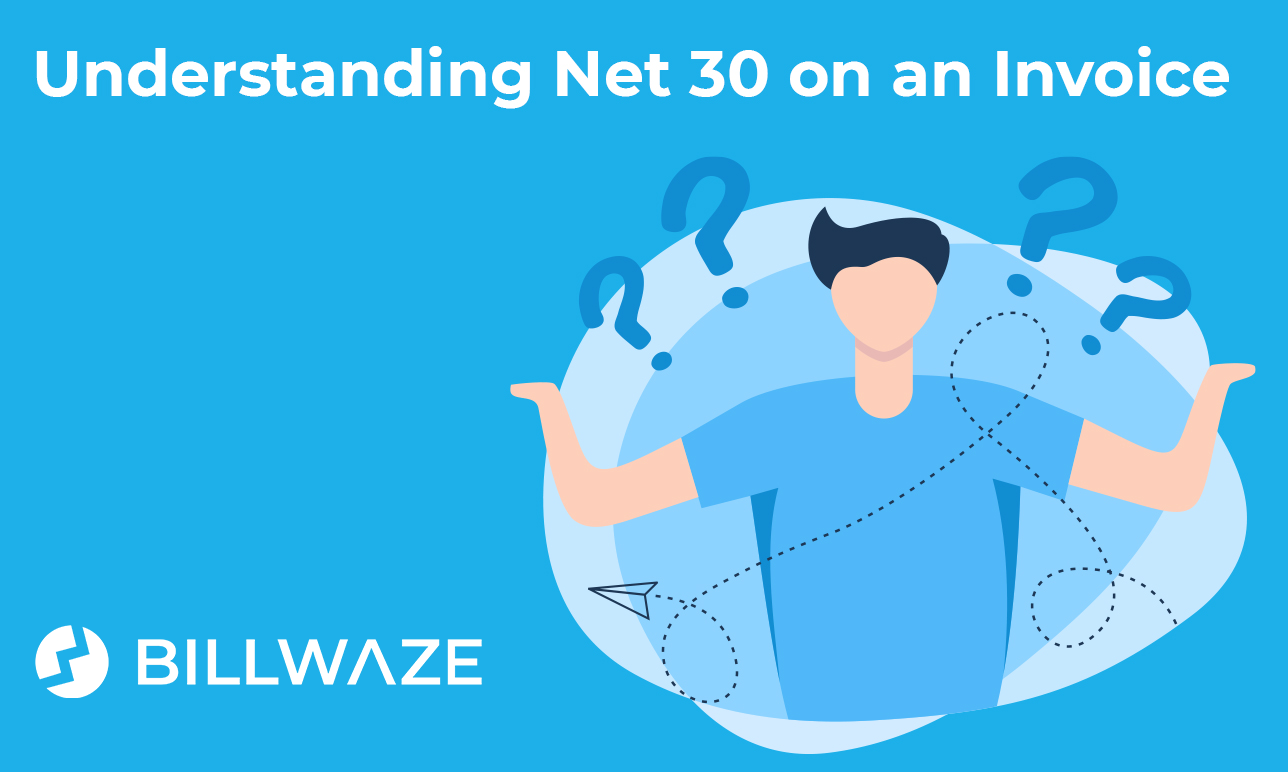When written on an invoice, “net 30” simply means that the customer has 30 days from the date of the invoice in which to make payment. If, for example, “net 30” is written on an invoice dated March 1st, then payment is due on or before March 30th. Net 30 is not the only option available to vendors, and they can change the terms to suit when they wish to be paid. Net 10 and Net 60 are other common periods applied.
What does the term Net 30 Mean?
Net 30 is a credit term that can be applied to an invoice when payment is due after the goods or services have been supplied. Its purpose is to avoid any confusion in when payment is due.
Why Net 30?
If payment terms are not included on an invoice, confusion over when payment is due is all too easy. Stating clear payment terms such as net 30 makes it absolutely clear when payment must be made.
Clear payment terms dramatically increase your chances of being paid on time. And when cash flow is critical to your business, any delay can be an expensive inconvenience.
Whether you choose to write “net 30” (or “net X”) or simply “payment is due in X days” It is important to make your payment terms clear, concise and consistent to maximise your chances of being paid on time, every time.
Is Net 30 Right for Me?
You don’t automatically have to extend the same payment terms to all your clients. Small businesses in particular may opt to extend longer terms (such as net 30, 60 or 90) to familiar and trusted clients, while newer clients may receive net 10 or net 20 terms. This helps to ensure that your new clients pay their invoices promptly.
You could even choose to offer a discount incentive in partnership with your terms. Let’s say you wanted to offer net 30 day payment terms, but with a 6% discount on invoices settled within seven days. You would write “6/7, net 30” on your invoice.
Where on My Invoice Should I Display Payment Terms?
It is up to you where you write your terms, but remember that they should be clear to avoid confusion and delay. You might choose to post them right at the top of the invoice, or adjacent to the invoice total – both places your clients are guaranteed to look!
What is an Invoice Net Amount?
On an invoice, the net amount is the total cost of the products and services provided, before applying additional items such as sales tax, fees and discounts. All of these elements combined produce the “gross value”, or the actual amount payable.
Not all companies will include a gross amount. If the business is tax exempt, or dealing with a customer in another country, for example, they may only charge the net amount.
Even if you do need to include the gross amount, detailing the net separately makes it clear to your clients how much they are actually being charged for the goods or services you have supplied to them, besides any applicable taxes, charges and discounts.
Does “Net” Always Mean the Same Thing on an Invoice?
No! Three are actually two different meanings to the word “net”.
Net can be in connection with payment terms. “Net 30” for example means that the full invoice balance is due no later than 30 days from the invoice date.
However, net can also refer to the total payment due. Since the net value excludes taxes and other additional items, it shows the customer exactly how much the goods or services they have purchased cost.


 Billwaze
Billwaze 

